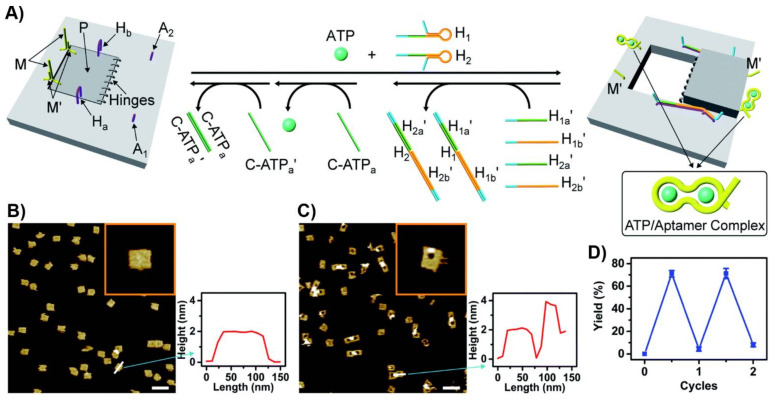Figure 18.
(A) Schematic “mechanical” open of a “window patch” in an origami tile using the formation of ATP/APT aptamer complexes as a mechanism to unlock the “window”. The formation of the ATP/ATP aptamer complexes followed by the binding of helper strands to “window” handles and their stretching to bind the stature foothold, associated with the origami scaffold led to the fixed rigid opening of the “window” and to the formation of a nanocavity in the origami raft. The reverse unlocking of the foothold binding strand and the release of ATP relocks the caped “window” structure. (B) AFM images of the locked origami structures and accompanying cross-section analysis. (C) AFM image of the cavity containing unlocked origami rafts and accompanying cross-section analysis. (D) Switchable and reversible ATP-driven opening and closure of nanocavities in the origami raft. Reproduced with permission from ref. [217]. Copyright 2020 Royal Society of Chemistry.

